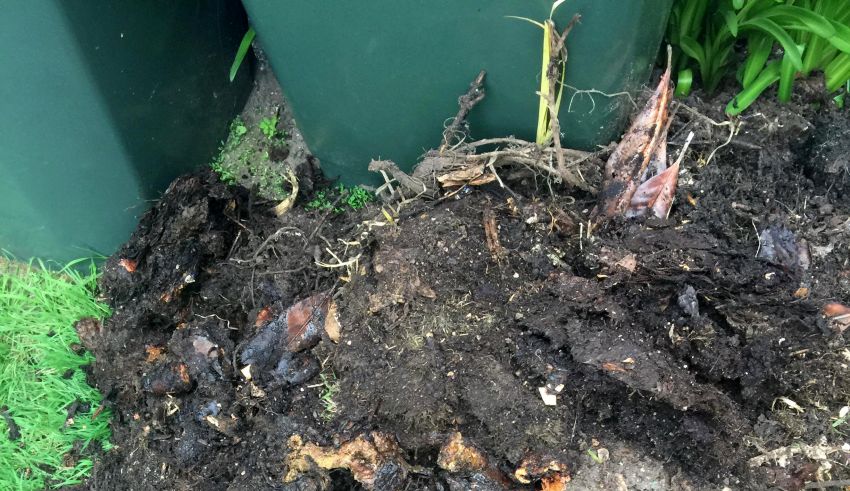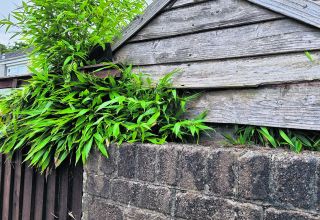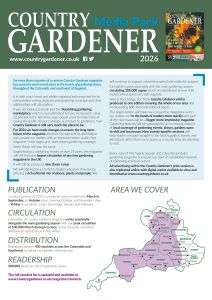
The surge in interest in composting is positive, but too many gardeners seem to be making common mistakes which is either slowing down or destroying the whole process.
While the concept of composting is simple—returning organic material to the earth it can be misunderstood. Errors from gardeners not only slow the decomposition process but can also lead to odour problems, pest infestations, or environmental harm, discouraging lots of would-be composters.
Imbalanced green-to-brown ratio
Perhaps the most common mistake is failing to maintain the proper ratio between ‘greens’ (nitrogen-rich materials like food scraps and grass clippings) and ‘browns’ (carbon-rich materials like dried leaves, cardboard, and straw). Many beginners throw kitchen waste into a pile without adding sufficient browns. A balanced ratio (roughly 2:1 browns to greens by volume) is critical for microbial activity. Too much nitrogen leads to wet, smelly compost that may attract pests. Too much carbon slows down decomposition. Composters should keep a ready supply of dry browns (e.g., shredded paper or leaves) and add them regularly. Layering greens and browns or mixing thoroughly helps maintain balance and airflow.
Composting the wrong materials
Another frequent error is putting inappropriate items into compost bins. This includes meat, dairy, oily foods, diseased plants, and non-compostable plastics labelled as biodegradable. Meat and dairy attract rodents and can emit foul odours. Some compostable plastics only break down in industrial facilities, not in home systems. Diseased plants can spread pathogens when the compost is applied to soil. Keep to a clear regime of what can and what cannot be added to a compost bin.
Neglecting moisture levels
Both overly dry and overly wet compost piles are problematic. Beginners often ignore moisture levels, leading to poor decomposition. Microorganisms need moisture to thrive, but not so much that it becomes anaerobic. A soggy pile slows breakdown and produces methane, while a dry pile halts microbial activity altogether. The ideal compost moisture level is like a wrung-out sponge. Add water to dry piles or mix in dry browns to absorb excess moisture. Regular monitoring, especially in extreme weather, is essential. Invest in a basic thermometer to make sure your pile is hot enough. Taking its temperature is a great indicator of whether or not you need to add water or not.
Poor aeration and turning
Compost piles are often left unturned or compacted, reducing oxygen levels. Without oxygen, the pile becomes anaerobic, emitting methane and producing a foul odour. Turning the compost introduces oxygen, accelerates decomposition, and helps control temperature. For hot composting, turn the pile every few days or at least once a week. For cold composting, less frequent turning is acceptable but still beneficial. Avoid over-compacting the pile by keeping bulky browns in the mix. Remember to get as much air into the compost bin as possible. Regular turning of the pile is the most efficient way to achieve this.
Composting in inappropriate containers or wrong locations
Using non-ventilated bins, placing compost piles in full sun (or deep shade), or setting them directly on non-draining surfaces like concrete are common location mistakes. Location affects temperature, drainage, and accessibility. Bins without airflow trap gases and heat unevenly. Poorly placed piles may leach into water sources or become inaccessible during winter. Use bins with ventilation, elevate or place them on soil for drainage, and choose a semi-shaded area protected from extreme weather. Accessibility also matters: people are more likely to compost if the system is easy to reach.


Expecting instant results
Many people expect compost to be ready in a few weeks and give up when it doesn’t happen. Composting is a natural process that can take up to six months or more depending on the method, materials, and environmental conditions. Unrealistic expectations can deter some people from starting the composting processes. Composters need to be realistic and patient on timelines and stages of decomposition. It’s so much better to be watchful with patience, and use multiple bins to allow staggered use.
Ignoring local regulations or resources
In some areas, composting is regulated due to pest concerns or environmental issues. Many people either ignore these regulations or remain unaware of valuable local composting services. Improper composting can cause community tensions or fines. Additionally, some areas offer free pickup, training, or community composting hubs that go underused. Encourage residents to connect with local waste management authorities or environmental groups. Promote community composting programs where feasible, especially in apartment buildings or urban areas.
Governments, schools, and community leaders must work together to provide tools, training, and infrastructure.
On a larger scale, councils are now starting to really invest in successful composting programmes, composting facilities, and incentives for businesses to participate. Widespread use of waste material into compost which is then recycled and offered back to the community has grown by over 200 per-cent in the last seven years.
Schools are incorporating composting into science and sustainability curricula.
The convergence of environmental crises, waste challenges, and growing ecological consciousness makes now the peak time for composting. It is a practice deeply rooted in nature, yet modernized by new technologies, policies, and community efforts.











